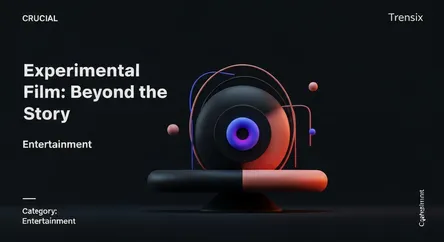Entertainment
Experimental Film: Beyond the Story

Discover experimental film, the cinematic art form that breaks narrative rules to explore abstract ideas, visuals, and sounds. What is it really?
What is it?
Experimental film, often called avant-garde cinema, is a mode of filmmaking that rigorously re-evaluates cinematic conventions and explores non-narrative forms. Unlike mainstream movies that rely on clear plotlines and character development, experimental films prioritize artistic expression, using abstract imagery, unconventional editing, and sound design to evoke emotions or explore concepts. These films often reject a linear story in favor of creating a specific mood, rhythm, or visual pattern. They are the cinematic equivalent of abstract painting or poetry, pushing the boundaries of what film can be and challenging the viewer's expectations.
Why is it trending?
The influence of experimental film is increasingly visible in mainstream media and art. Acclaimed directors often incorporate avant-garde techniques into their work, exposing wider audiences to non-traditional storytelling. Furthermore, the rise of streaming services and video-sharing platforms has made these niche films more accessible than ever before. Film festivals continue to champion experimental works, and art galleries frequently feature video installations that blur the line between cinema and fine art. This increased visibility has sparked renewed curiosity in a genre that constantly innovates.
How does it affect people?
Experimental films challenge viewers to engage with cinema on a deeper, more personal level. By removing the comfort of a traditional plot, they force the audience to interpret visuals and sounds, fostering a more active viewing experience. This can be intellectually stimulating, emotionally powerful, or even disorienting. It encourages audiences to think critically about the medium of film itself—how stories are told and why. For many, it opens up a new world of artistic possibilities, showing that a movie doesn't just have to be a story; it can be an experience, a feeling, or a visual poem.